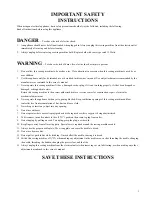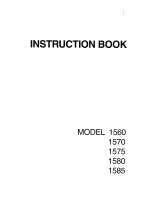
Publication Number 53719. Issue 3, April 2012
Page 72
SERVICE MANUAL FOR THE 13754 TGX150 INTERNAL RLAN TYPE A/B SC ETM
8.3
TESTING AND REPAIRING CABLES ASSEMBLIES
8.3.1 Testing Cable Assemblies
Many problems that appear to be caused by defective circuit boards or components may, in fact,
be due to faults in the connecting cables or wiring. Therefore, before changing the circuit
boards, it is advisable to check that the wiring is in a satisfactory condition. This can be done
simply by ensuring that all connections are in good order and that there is no visible damage.
Finally, check (using a suitable meter) that there is proper continuity along cables and wiring -
see Figures 28 to 45 for details of the cable assemblies.
8.3.2 Repairing Cable Assemblies
There are two types of connectors, Molex and IDC, used on the cable assemblies in the ticket
machine. The Molex connectors are repairable to pin level but, unless soldering experience is
available, a defective IDC connector must be replaced complete with the cable assembly.
The removal of terminals from Molex connectors may also be required when renewing a
component that is using a shared connector. The following details explain how to remove an
individual pin (crimp).
Note: Individual connectors may differ slightly from the one described here and shown in
Figure 27, but the general principles remain the same whichever type of connector is
fitted.
1.
Referring to Figure 27, remove the plug from the socket by a straight pull on the body
of the connector not on the wiring as this may damage the wiring, connector, or both.
2.
Hold the wire that is to be removed and push it in towards the body of the connector
to take the strain off the barb on the crimp pin.
Figure 27. Crimp Pin Details
3.
Use a small screwdriver to depress the barb, and pull the wire and crimp pin out of the
connector.
4.
Before re-fitting the crimp pin, examine it for signs of wear or damage. If the crimp
pin itself appears to be excessively worn or damaged, it must be replaced.
5.
Push the crimp pin gently into the relevant hole in the connector until the barb locks
firmly into place in the body of the connector.















































